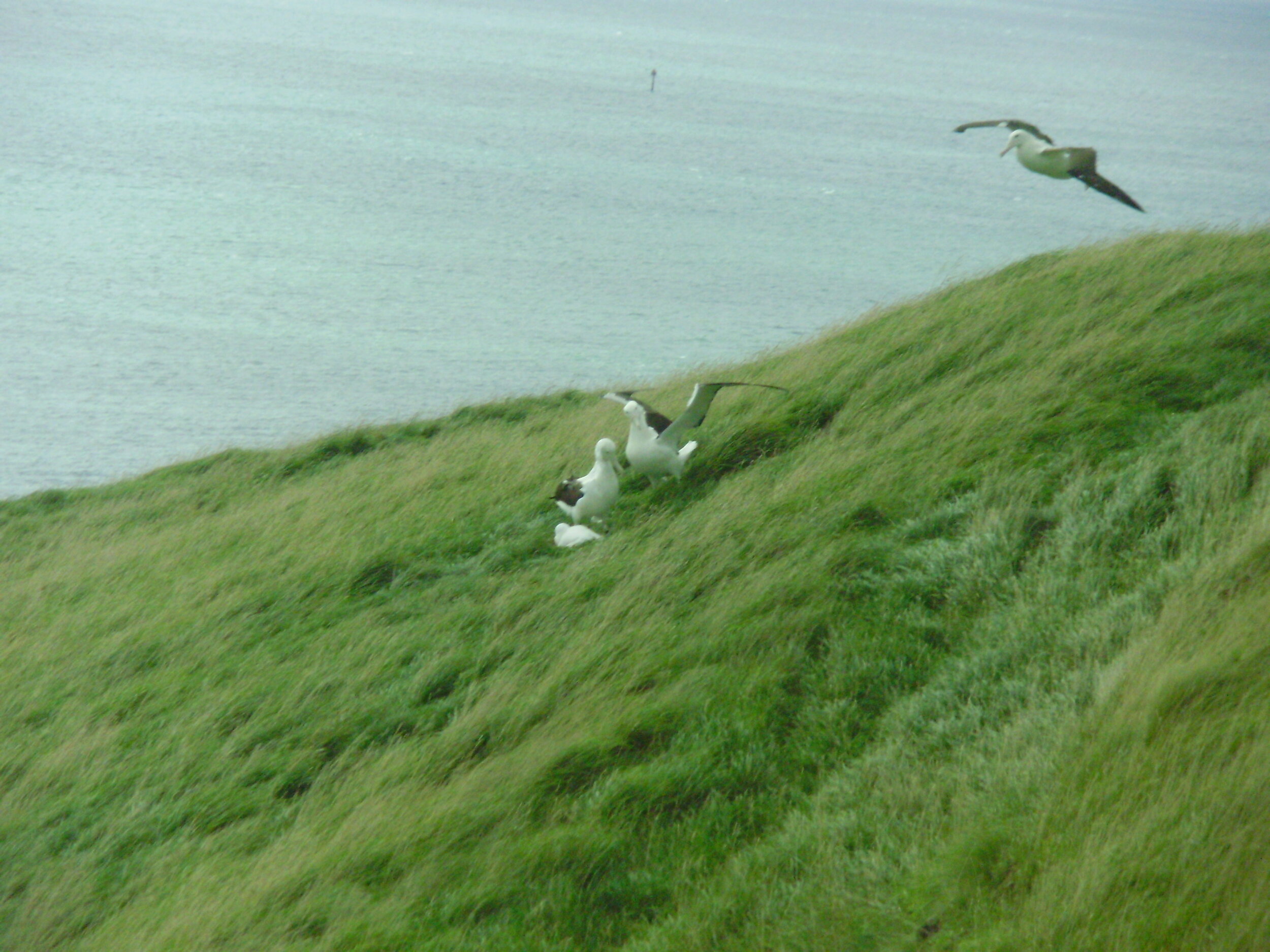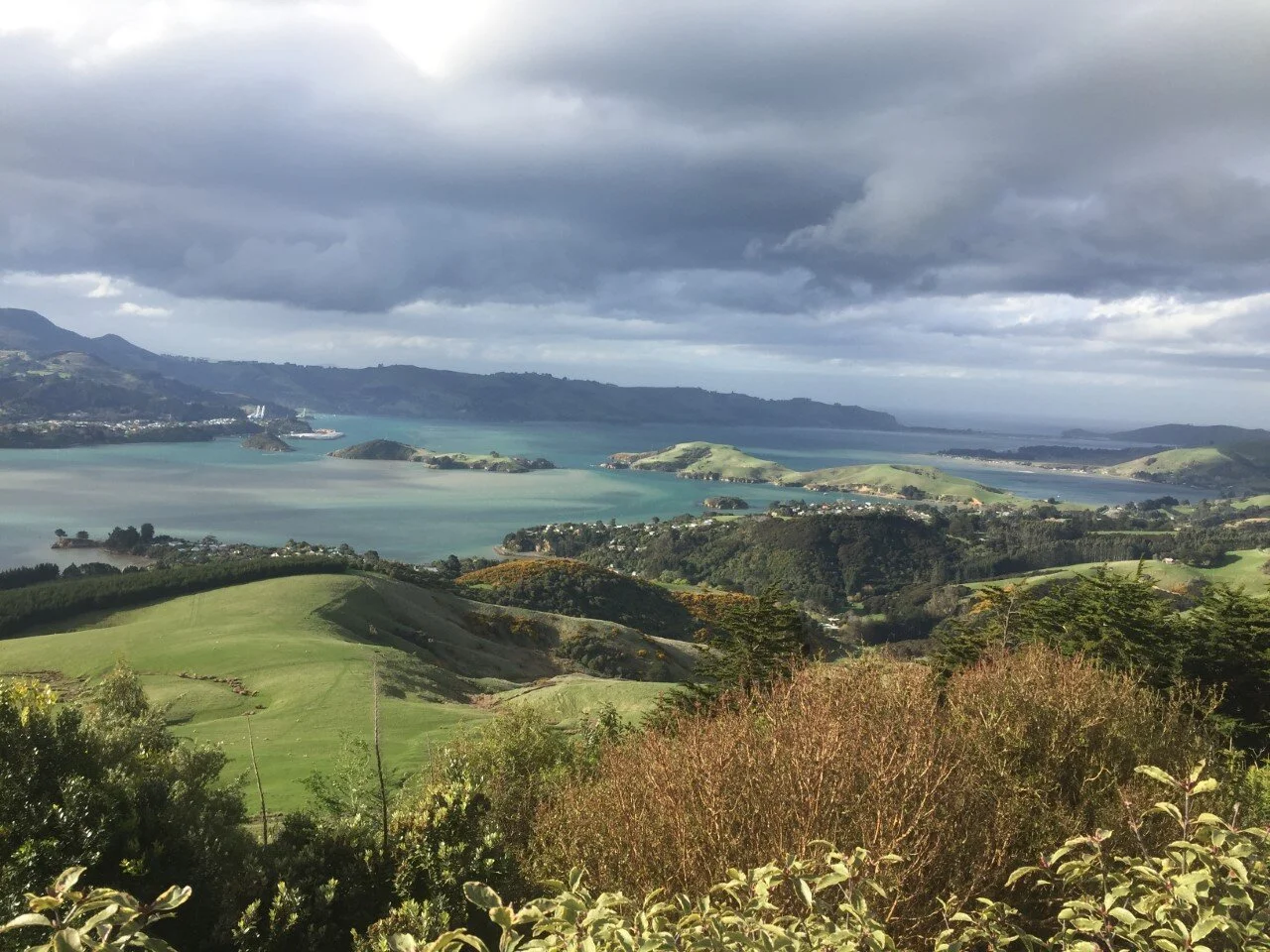Spotting some rather large baby birds on their nests... second part of Royal Albatross visit
The fun properly started at the point we headed outside into the lashing wind and rain – it seems albatross aren’t fussed about the unpredictable Southland weather. Wrapped up against the elements we passed through a couple of gates before climbing up a small hillside to the viewing observatory. There in front of us through the glass were several albatross chicks being blown about on their nests. We counted nine that were visible with our naked eye. Binoculars were provided to get a closer look at the chicks. They were all pretty big for babies and several where starting to shred their baby fluffy feathers for their adult markings. Apparently by the time they reach this age they are already 8kg, not bad for a five month old!! We were passed a soft toy version to hold to get an idea of the weight which was quite staggering to say the least. Dumbbells were not required! At this age the babies are much livelier and don’t just sit on the nests. One in front of us was busy doing some gardening and wandered up and down rearranging loose twigs and grass within easy ready. Others spent a lot of time standing up, opening their giant wings to give them a good shake. Whilst some just waddled about or looked up to the sky in the hope that Mum or Dad might return with some much-anticipated food. The parents take it in turns to return to the nest to feed the chicks and whilst we were there several adults flew over us looking for a spot to land. One actually did circle and manage to land not too far away, but unfortunately not to feed a chick that we could view.
A baby albatross chick accommpanied by some adults
One interesting thing our guide informed us was that Albatross don’t recognise their own young. So sometimes another egg can be put on the nest and the adult pair will adopt it as their own. The chicks are monitored closely as these birds are so endangered that none can afford to be lost, so if some are struggling or a parent goes missing, as occasionally happens sadly, then rangers will step in and feed them themselves. Each chick relies on both it’s parents as they leave and return separately to feed it. Rearing takes 7 months and takes a lot of food so it’s impossible for a chick to fledge with only one parent to care for it. Our guide showed us a notice board with all the nests we were able to see from the observatory listed. It had details of the parents. All birds that nest here are tagged in different colours so that they can be accounted for, the birth date of the chick and it’s weight – they are weighed frequently by the rangers. Any bird underweight is then fed additional food. It’s a full-time bird parenting job for some of these rangers in conditions that are not so hospitable at times. By September the parents have left for a year at sea and the chicks are ready to fledge. Once they take that mighty plunge out across the sea they do not appear on land, or at Taiaroa Head again, for another 4 -6 years. These amazing chicks are off travelling the world on their Kiwi overseas adventure.
View over the Otago Peninsula
After an incredible close up experience and now being fully versed in the life of an albatross we wrapped up warm for the walk back down to the visitor centre. We passed the old jail cells on route – on a day like I visited these open air cells must have been quite a punishment for anyone stepping out of line. Thankfully I was able to escape and made my way back to the warmth of the café and the nourishment of a tasty afghan biscuit (found all over New Zealand afghan biscuits are made from cornflakes and super chocolatey and well worth a try).

